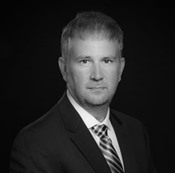Program Information
Medical Physics Leadership
M Howard1*, P Halvorsen2*, (1) Parkridge Medical Ctr, Chattanooga, TN, (2) Lahey Health and Medical Center, Burlington, MA
Presentations
SA-A-BRA|B-0 (Saturday, March 18, 2017) 8:00 AM - 10:00 AM Room: Ballroom A|B
Health care’s macroeconomic picture is changing. Radiology and radiation oncology have traditionally been considered “revenue centers” by hospital administrators, but new payment models are changing the dynamic. Many procedures that were previously reimbursed individually are now bundled, reducing the visibility of medical physics’ contribution to the organization’s revenue. The focus on the cost of our services will likely intensify. Every clinical physics leader must understand the total cost of providing such professional services, and must be able to clearly articulate such costs – and more importantly, the value of the professional services - to healthcare administrators. In this presentation, we will explore the many components of the total cost, including staff compensation, benefits, continuing education, recruitment/retention and locums expenses, physics instrumentation and instrument calibration, office equipment, and outside validation services. We will review how to reflect the contribution of these professional services toward revenue. Different service delivery models will be described, such as delegating some work to assistants. Procedural volume capacity estimates and the impact of different delivery models on such capacity will also be described. Finally, we will review how to engage with healthcare administrators in constructive conversations to help them understand the role and value of clinical physics services and how to balance the cost/benefit equation for one’s particular practice environment.
The process for justifying capital equipment is complex and often not fully understood by the clinical physicist. Administrative staff use cost metrics to drive purchases while most physicists look at the clinical need. In order to determine an accurate return on investment (ROI), all the costs need to be evaluated. We will build a proforma that will take into account all of the costs for the project as well as income that can be generated. Staffing, payer mix, service contracts along with other costs will be analyzed. In addition, the need for physics equipment is often overlooked during these projects. We will discuss how best to account for the necessary equipment and how best to include it in any capital expenditure. Project Management is a key component in large expenditures. A brief overview of project management along with various methods on how to keep projects on time will be discussed.
Learning Objectives:
1. Understand how health care’s macro-economic situation is changing healthcare administrators’ perspectives of cost and revenue in imaging and radiation therapy.
2. Understand what comprises the total cost of providing clinical physics services.
3. Understand how to describe such costs in the appropriate context for healthcare administrators.
4. Understand how to assess the cost/benefit profiles of different clinical physics service delivery models.
5. Understand how capital projects are viewed from the physicist all the way to senior management.
6. How to interpret and develop a proforma accurately for a variety of projects.
7. Learn all the factors that go into a large capital project and how they can impact the process.
8. How to manage large projects and ensure that they finish on time.
Contact Email:



